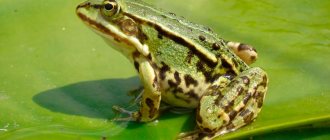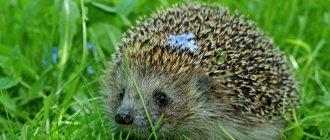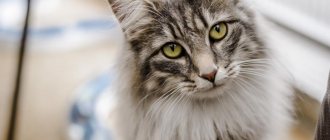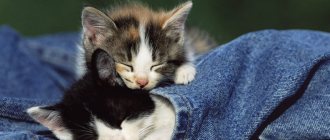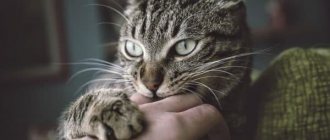Cat brain
Does your cat react when you call its name?
Can a cat distinguish your voice from a stranger's voice?
Can a cat find a toy hidden behind a large object, such as a closet?
If the answer to all these questions is YES
, this means your cat is quite smart.
At least, this is reported by feline behaviorist
Kristin Vitale at the Human-Animal Interaction Laboratory at the University of Oregon
Today Felis silvestris catus
(the official name of the cat) is one of the smartest animals on Earth. According to the specialist, this may be due to the flexibility of cats in terms of behavior.
Marvelous
, but to date, relatively little research has focused on cat cognition or internal mental processes, especially compared to the significant amount of research on the psyche of dogs.
TOP 10 most affectionate and playful cats
Cat owners know very well how interesting it is to watch when a pet is hunting for an imaginary mouse or simply running around the house. Some cat breeds can maintain their lively personalities not only as kittens, but also as adults. Let's look at which breeds are the funniest and most playful:
• 10 •Japanese Bobtail
These pets devotedly love their family and are ready to spend all their time entertaining their owners. Very active and playful - the Japanese Bobtail immediately begins to run and jump at the sight of its favorite toy. It’s interesting to watch their funny games, however, bobtails love their owners not to “look at them with a smile while sitting in a chair,” but to play with them.
more details
• 9 •sphinx
Very smart and always energetic, unconventional in appearance, sphinxes are always ready to have fun with their owners and guests. They have excellent control over their bare paws with elongated fingers - they quickly grab small objects with them.
more details
• 8 •oriental cat
Those owners who love cats that are energetic, always sociable and ready to communicate will find in the Oriental cat an excellent friend, always ready to actively play and cheer up its owner. Moreover, even the passing years do not particularly reduce their enthusiasm and “endless” energy.
more details
• 7 • munchkin
These little cute creatures with small paws, it seems, are simply “not capable of growing old.” And indeed, they can maintain a playful, cheerful, friendly character even in the most advanced cat age.
more details
• 6 •Somali cat
Beautiful in appearance, Somali cats love active attention. Your pet will sit near the door for hours, waiting for you to come home and start playing with it.
The extremely high degree of “overflowing energy” does not subside over the years.
more details
• 5 •ocicat
The real blood of wild ancestors flows in the veins of the Ocicat, so this cat is simply a “perpetual motion machine.” The sociable animal is in constant search of prey or playmates. She is not at all afraid of new guests, and boldly invites them to have fun.
more details
• 4 •Siamese cat
In fact, known for their penchant for hunting sparrows, Siamese cats are very playful. True, they are ready to have fun with their owners - only if they themselves want it.
more details
• 3 •Cornish Rex
If you dream of an energetic, inquisitive and lively cat, then this is just the Cornish Rex. For such a cheerful creature: everything in life is a game (they never get tired, climb everywhere with virtuosity, jump actively, and at the same time have very agile legs).
more details
• 2 •Bengal cat
The Bengal cat learns relatively quickly and masters a huge number of tricks at a young age - she loves all kinds of games. The fun of these smartest funny guys includes: turning on or off the light, opening the door on their own or flushing the toilet...
more details
• 1 •Abyssinian cat
The Abyssinian cat rightfully occupies the first place in our rating: she is ready to run after a mouse all day, she has a cheerful character - it’s never boring with this pet. The Abyssinian cat is always “hyperactive” and never gets tired - if a butterfly flies into the room, it will rush after the insect until it catches it (even if this takes several hours).
more details
Smart Cats: Thought Process and Intelligence
Christine Vitale is one of the few researchers
, studying a cat's thought process, which she says is different from intelligence.
She says that thought process
refers to
how an individual cat thinks about something, while
intelligence
has more to do with how a cat uses its thoughts to influence something in an intelligent way. There is a very thin line between these processes.
Until now, researchers have looked more at things like cats' hearing, vision and sense of smell.
All these senses play an important role for cats from birth, especially smell, since kittens are born blind, but with working olfactory systems.
LiveInternetLiveInternet
Your_Veterinarian_Doctor
all posts by the author Cats are extremely smart creatures. Scientists-ethologists (studying animal behavior) have long established that murkas and snow leopards can not only make cause-and-effect relationships, think abstractly, solve complex multi-step problems, count, but even deliberately deceive a person.
Cat habits and oddities have long aroused people's interest. And the inherent mystery of these animals has given rise to a huge number of myths and prejudices, some of which we will try to debunk today.
Myth one. Cats are not very smart, they are difficult to educate and train. These cute fluffies are very inquisitive. They are attracted to everything new, unusual and bright. If you take advantage of this feature, you can easily teach your pet both simple household skills and complex tricks. In addition, a consequence of the high intelligence of cats is sometimes stubbornness: the cat understands perfectly well what the owner wants from her, and repeated repetitions of tasks only irritate her. Raising a cat by beating is useless. She will become embittered and stop responding to her owner’s attempts to teach her something new. Myth two. Meowing is the language cats use to communicate with each other. The high level of intelligence and social motivation of cats has allowed them to develop a special language for communicating with their owners. Yes, yes, this is the “meow” - only and exclusively for us.
Cats do not use these sounds among themselves. Recent research by animal psychologists at Cornell University has proven that cats know very well how to explain what exactly they want from a person. The most interesting thing is that people very quickly begin to understand the needs of their pet. Myth three. Cats are very cunning, they always behave badly to spite their owners. In fact, behavior problems most often arise in cats that have been exposed to stress. Cats cannot tolerate radical changes in their territory, be it moving, renovations, or the arrival of a new person in the house. If the cat has become unbearable, it is either sick or depressed. By the way, these animals are very sensitive to the psychological climate at home. Regular family scandals between owners can lead to serious illnesses, mental and intellectual disorders in cats.
Test your pet's IQ! Part I: Answer the questions If the answer is “rarely or never,” your cat gets 1 point “usually yes” – 3 points “very often” – 5 points 1. Does your cat sense changes in your mood throughout the day? 2. Does the cat follow at least two verbal orders, for example, “Fetch!”, “You can’t!”? 3. Does the cat recognize the owner's facial expression, such as a smile, an expression of pain or fear? 4. Has the cat developed its own language to express its feelings and desires, for example, purring, squeaking, purring, screaming? 5. Does the cat have a certain washing order, for example, first washes its face with its paw, then licks its back and hind legs? 6. Does your cat associate certain events with feelings of joy or pain, such as a car ride, a visit to the vet? 7. A cat has a “long” memory: does it remember the places it has been before, its favorite foods? 8. Does the cat tolerate the presence of other animals, even if they come closer to her than 1 meter? 9. Does the cat have a sense of time, for example, does it know the time of feeding, brushing, etc.? 10. Does the cat use the same paw to wash certain areas of its face? Part II. Call your cat and give her tasks. Follow the test directions exactly. Each task can be repeated 3 times, with the highest number of points scored. First task Place a large, open package. Make sure your cat sees the package. Then observe and award points to the cat. A. The cat approaches the package with curiosity - 1 point. B. Touches the bag with any part of the body (nose, mustache, paw, etc.) - 1 point. B. The cat looks into the bag - 2 points. D. She enters the bag, then immediately comes out - 3 points. D. The cat enters the bag and remains there for at least 10 seconds - 3 points. Second task Take a pillow and a rope about 1 meter long. Place the pillow in front of the cat, then slowly pass the string underneath it so that it gradually disappears on one side of the pillow and appears on the other. A. The cat follows the movement of the rope with its eyes - 1 point. B. Touches the rope with his paw - 1 point. B. Looks at the place on the pillow where the rope disappeared - 2 points. D. Tries to catch the end of the rope under the pillow with his paw - 2 points. D. Lifts the pillow with his paw to see if the rope is there - 2 points. E. Looks at the pillow from the side where the rope will appear or has already appeared - 3 points. Third task Place a mirror approximately 60 - 120 cm in size against the wall. Place the cat in front of the mirror. Watch her and score points. A. The cat approaches the mirror - 2 points. B. Notices his reflection in the mirror - 2 points. B. Hit the mirror with his paw, plays with his reflection - 3 points. Part III. Answer the questions based on observations of the animal 1. The cat is well oriented in the apartment: it runs to the windows and doors if something interesting happens behind them - 5 points. 2. The cat releases objects from its paw in accordance with its desire, but does not drop the object accidentally - 5 points. Part IV. Answer questions 1. The cat sleeps or dozes more time than it is awake - subtract 2 points. 2. The cat often plays with its own tail - deduct 1 point. 3. The cat has trouble finding its way around the apartment and may even get lost - deduct 2 points. Evaluation of results Calculate the total number of points scored in the first three parts and subtract the points scored in the fourth part from it. 141 or more points - your cat is a genius 131 - 140 points - your cat is talented and very smart 121 - 130 points - your cat is very smart 111 - 120 points - your cat's mental abilities are above average 90 - 110 points - your cat's mental abilities are average 81 - 89 points - your cat's mental abilities are slightly below average 71 - 80 - your cat is stupid 70 points or less - your cat has a lot of advantages, but intelligence is not the main one =) author Maria Sarycheva
source https://kotoff.org/stati-o-koshkah/povedenie/110-tri-mifa-ob-intellekte-koshek.html
Object permanence: if something is missing, it still exists
Another interesting aspect
, which was studied early on, is “object permanence,” the understanding that when an object disappears from view, it continues to exist.
Several studies have shown that cats can easily pass tests
, in which they see an object disappear and then try to find it where they last saw it. Researchers say cats not only solve these tests easily, but the older they are, the better they perform at the tasks.
Secrets of a great mind
There are no precisely established criteria by which to measure the size of a cat's intelligence. Pets can show their ingenuity in their own way. Some easily understand the words of the owner and answer them in their own language, approaching when they are called.
Other favorites have an incredible thirst for knowledge. Cats, without exception, are explorers. Some of them are so curious that they will study a new object in the apartment for a long time, trying to understand what it is made of and how it works. Furry explorers diligently walk around new territories, sniff and remember.
Interesting! Scientists have proven that cats can count! Most of the pets rarely make it past the first ten (up to 7-8). However, there were seals who counted to 15-20.
It's not just people who have geniuses. The smartest cats know a great variety of commands, own several types of transport and even know how to control electronic gadgets.
Important! Cats subtly sense the emotions and state of a person. These animals make good psychologists, doctors and just friends.
Cat's internal clock
Another study tried to understand whether cats have an internal clock.
According to scientists, cats have them because they lead an active lifestyle at dusk and dawn. It is important for them to know when to hunt and when to rest.
It is noteworthy that when cats live next to us
, they are smart enough to change their natural behavior. The man got out of bed, which means this is a signal. It's getting lighter outside, which means it's time to eat. Cats make different connections and this is called associative learning.
Sphinx
The birth of a hairless kitten due to a genetic mutation has always been considered a culling. But at one point, such an unusual appearance first interested Canadian breeders, and then French, American and Russian. As a result of their work, the Canadian and Russian (Don and St. Petersburg) Sphynx breeds were developed.
Sphynx owners note their friendliness towards everyone around them, and on the other hand, their lack of narcissism, as if they understand that the lack of hair and wrinkled skin can cause a grimace of contempt in some people. But depending on the mood, sphinxes love to pose and enjoy the admiration in the owner’s gaze.
Interesting video:
Smart indoor cats, Sphynx cats love to play, especially hide and seek or chase. And they can play not only with people, but also with other animals in the house, for example with dogs.
Understanding Human Reaction
Scientists in Christine Vitale's lab are studying how cats understand and respond to social cues, specifically a person's emotional response to an unfamiliar situation.
In one test, scientists told the cat owner to either be afraid
, or enjoy a fan that might seem scary to a cat.
Next, the researchers looked at whether the cat picked up on human emotional signals. If the owner is afraid
, does the cat look at the object with caution?
And if the owner is happy
, does the cat try to interact with the object?
Smart cats understand the emotional state of their owners.
Ability to Attach
In one study, owners and their cats walked in together
to the laboratory. Then the scientists “took” the owner out of the room, leaving the cat alone.
In 2 minutes
the owner returned to reunite with the cat. Here's what scientists noticed:
- Some cats met their owner
, and then went back to explore the room. These cats were strongly attached to their owner.
- Another group of cats
after the owner returned, she was dissatisfied with his departure, and therefore began to scratch him.
- But there was a third group
, which did not react in any way to the return of a familiar person - these cats simply sat and ignored everything that was happening. This is due to the fact that they have long established a connection with the owner.
What is the intelligence of a cat?
Which cats are smarter: purebred or mongrel cats – you can argue. But there is a difference in intelligence between individuals of different breeds.
The smartest cats are found in ancient breeds. Why exactly these representatives are somewhat smarter than others is not known for certain. The intellectual abilities of cats could develop in the process of evolution and long-term natural selection, but at the same time, cats could always be so smart that the population could survive to this day.
There are no tests that can be used to identify the smartest cats among all individuals. To understand how developed a certain cat’s intelligence is, it is enough to watch him for some time, communicate and play.
Norwegian Forest Cat
Smart animals can:
- Respond not only to a nickname, but also to another address spoken with a certain intonation. At the same time, they will approach a gentle call faster than an imperative shout - they may not hear it at all;
- Learn to sharpen your claws only in a special place;
- Go to the toilet in the tray. Some pets even prefer to use the toilet, as a person does, and they master it on their own;
- React quickly to danger - run and hide in case of an unusual or unexpected situation;
- Biding your time to get your way, and this doesn’t just show up in mouse hunting. Smart, enterprising cats can sit quietly in a corner of the kitchen and wait for the owner to leave for a minute, and then quickly and quietly steal a piece of meat. Or wait until no one is home to play with soft toys in the children's room;
- Remember where the owner hides the little thing he likes, and then for a long time and patiently try to open the door of the cabinet with his paw. And many cats succeed in this;
- Accustom your owner to feed him from the table, while making a pitiful appearance and touching his leg with a soft paw;
- Wake up the owner in the middle of the night if he suddenly wants to eat or gets bored;
- Distinguish between the owner’s mood and even health status;
- Choose your own owner and, in some way incomprehensible to us, influence our subconscious so that we take the cat into our home.
Siberian cat
There are many examples of smart actions and they can manifest themselves differently in each individual. In many ways, a pet's intelligence depends on its living conditions. Those cats who live in a warm place, do not need anything, but at the same time no time is given to them, no one trains or talks to them, intelligence may be somewhat lower than that of cats with active owners.
The mind and memory of cats can develop, especially in the first years of life, regardless of breed or gender.
Follows the finger
Early training can help cats
tune in to human signals such as finger pointing.
One study found that cats can find food when a person points it out.
More recent research shows that cats can even distinguish between human voices.
People view cats as independent, aloof, and selfish.
But when they see how social these animals can be, the debate stops. It is very important to understand their behavior and how they see and understand the world around them.
TOP 5 cats that are easy to train
Many people think that it is absolutely impossible to train a cat. But actually it is not. Yes, of course, there are breeds that are not suitable for training (for example, Persians). But there are also many representatives of the cat family who are naturally smart and capable of following the commands of their owner.
• 5 •Bengal cat
Representatives of this breed are extremely quick-witted, at the same time mischievous and love to play with everything they come across. They are attentive and notice the actions of their owners - thanks to which they can independently learn to open doors and drawers, even use switches.
more details
• 4 • Burmese cat
These pets are very talkative and need constant mental stimulation. They are not difficult to train, plus they are ready to demonstrate everything they have learned with great pleasure.
more details
• 3 •Cornish Rex
These cats are very curious, watch every step of all family members and love to play. They are quite easy to train - they are intelligent and diligent.
more details
• 2 •Scottish fold cat
Representatives of this breed naturally know how to stand on their hind legs. They love to move and easily learn to perform various tricks.
more details
• 1 •Abyssinian cat
They have a lively character, they are distinguished by curiosity and playfulness. At the same time, they easily learn to obey their owner and can follow commands.
more details
Intelligence test for cats
Task 1: Hide a treat and see how long it takes your cat to find it
Place one treat under a cup to your left and another treat under another cup to your right. Point to the cup you want the cat to go to. Give her her favorite treat only if she goes in the direction you want her to go to the right cup. Do this 10 times.
How often has she chosen the right spot because you pointed it out to her and not because she smelled it? (A)
seven out of ten approaches;
(b)
less than seven approaches.
Task 2: Hide your favorite toy
Show your cat her favorite toy, and then place the toy behind a piece of furniture where your cat can reach. Watch her behavior. Cat (s)
immediately takes the toy;
(b)
remains in its place?
Task 3: Problem Solving Ability
Place a treat or toy in an egg carton and see if your cat can open the box. How quickly can she do it? (A)
quickly
(b)
slowly
Task 4: Can the cat understand your behavior?
Sit on the floor. Ignore your cat for one minute, then pay attention to his behavior for one minute. Does behavior change depending on your attention to the animal? In other words, she: (a)
interacts with you in some way;
(b)
ignores you.
Task 5: Can your cat recognize shapes?
Cut out a big circle
and
cardboard square Place the pieces in front of your cat. First, reward her for stepping on any piece.
Choose one shape that you want your cat to recognize. If it's a circle, only give your cat a treat when she touches the circle. What's Happening: Your Cat (s)
quickly understands that you need to touch the figure you need
(b)
rarely does this.
Top ten smart breeds
There are some breeds whose representatives are considered a little smarter than others.
Skogcat - Norwegian forest cat
The ancestors of these cats lived in the harsh conditions of the Norwegian forests. Cold winters and difficulties in obtaining food made them strong, resilient and savvy. Representatives of this breed lived in packs, which had their own laws. Living with people, in a family, they unconditionally accept existing conditions and try not to violate them. They love communication with children, do not mind other pets in the family, for them the owner is the leader of the pack. Commands and requests are understood perfectly, they sense the owner’s mood and do not interfere if he is busy or out of sorts. They differ from other breeds in that they cannot tolerate affection and tenderness.
Maine Coon
This is the largest cat breed, some representatives can weigh 12-15 kg. They are very clean and tidy, adhere to the daily routine and living conditions. They eat in a designated place, do not steal food or beg. Going to the toilet - only in the tray, damaging furniture - they won’t even think about it, playing pranks or causing mischief - this is not for them. They are thinkers and contemplators and love affection. Friendly to children, other animals, and strangers. They are easy to train and learn to walk on a leash.
Bengal breed
Siberian cat
The Siberian cat is a hunter and watchman, ideal for keeping in a private home. The mice themselves will avoid the house. She is distrustful of strangers when meeting them, but quickly gets used to them. She is friendly, affectionate and obedient towards her family. Comes running at the first call of the owner.
He is distinguished by a good memory, determination and patience in achieving his goals. If you want to hide something from her, hide it “under seven locks.” If she wants to open a simple door, she will do it, no matter how long it takes.
Bengal cat
The Bengal cat is smart, cunning and has a good memory. He remembers commands quickly and executes them correctly. Cunning allows you to achieve what you want by any means. If you don’t want to give her something, she’ll figure out how to distract you, and at that moment she’ll take what she needs.
It is difficult for these cats to live in an apartment - only a large house with access to all rooms. Only then will she feel in her element - constantly exploring everything and moving from one room to another. You can pacify restlessness if you devote a lot of time to her every day - play, hide her toys and send her on searches. It is advisable to equip it with many loopholes, stairs, tunnels - only then will it not damage furniture and other things.
Abyssinian breed
Abyssinian cat
Abyssinians are inquisitive animals. Not a single event in the house will take place without their participation, be it repairs, cleaning or welcoming guests. Despite this, he loves quiet evenings in your company and responds to affection and tenderness. Frequent long-term loneliness for her is stress, which can lead to illness.
A good memory allows you to remember entire phrases and know their purpose. If you repeat “let’s go have tea” before drinking tea, over time this phrase will make you run to the kitchen ahead of you. Many commands can be taught this way.
Balinese cat
If you give her a lot of attention, praise her, play with her, pet her often, she will be devoted until the end of her days. If you are distracted for a long time, you will quickly remind yourself of yourself with your pranks. Plays great with children and it is not clear who is entertaining whom – the children’s cat or vice versa. She has the gift of quickly finding the right thing hidden in the most secret place in her absence, and she does it instantly.
Siamese cat
Rumors that Siamese cats are vindictive are only partly true. They also remember respect and kind feelings towards them well. They only get used to the owner who feeds them. They don’t like to play with children; they can respond to children’s insistence with aggression. It takes a long time to get used to strangers, and sometimes they simply resign themselves to the presence of a new family member. They do not tolerate other animals, they even treat their fellow tribesmen with coldness.
Russian blue
British cat
The British are very careful about their personal belongings. Toys, bedding, bowls - only the beloved owner is allowed to them. If the owner is absent for a long time, the Briton will be sad and may even refuse to eat.
Sphinx
These are very affectionate animals that become attached to their owner, acutely aware of his mood, poor health, and even just fatigue. They consider themselves equal members of the family, are present during meals, and do not refuse extra portions. Food is rarely superfluous for them due to their excellent metabolism. Excessive mobility alternates with sound, prolonged sleep.
Russian blue cat
This cat combines two things - she is playful, like a child, and smart, like an adult. All pranks can instantly stop if he feels that the owner is not in a good mood. She may wait patiently for someone to pay attention to her, but at the same time she will periodically look into her eyes and rub her head against her legs.
Despite the fact that cats of the above breeds are smart, the development of this quality largely depends on the attitude towards the animal in the family. In the absence of affection and attention, the cat becomes uncontrollable and wayward, and it is rarely possible to correct this.
Who is better to have in an apartment - a cat or a dog: test
Before taking on such a big responsibility as having a pet, it is worth weighing the pros and cons. It is worth remembering to provide your pet with comfortable living conditions. Many people are faced with the problem of choosing between a dog and a cat, because both types of pets have their positive sides. This test will help you choose which animal is best for you to have at home:
- How much free time do you have per day that you can devote specifically to your pet:
- All day
- 1-2 hours a day
- Someone else will spend time with him
- What will you do if your pet goes missing:
- This won't happen
- I'll be looking all over the city, posting ads.
- Calmly wait until he returns
- Should you teach your pet tricks?
- Certainly
- I am busy
- No, pets do not need this
- Why have pets:
- I want to have a friend
- Out of boredom
- This is a toy for me
- Your pet’s place of residence is very dirty, you notice it, but you need to go to a meeting with friends, your actions:
- I'll stay late and quickly clean everything up
- I'll ask someone from my family to do this.
- I'll clean it up later
- How much do you love animals:
- Very much
- I'm calm
- Not good.
Take the test to determine your favorite pet.
If there are more first answers, then a dog is more suitable for you. If you want to make a true friend, then a dog is the best solution. You can walk and have fun with him, go on trips, so the dog can become a member of your family.
If there are more second answers, you are a “cat person.” These animals are less demanding and do not take much time for games and entertainment. But it’s always nice to stroke the smooth fur and listen to the purr of your pet.
Most of the third answers indicate that these types of pets are most likely not suitable for you; it is better to consider other options, for example, fish or a turtle.
Having a pet is a big step, and of course, you need to think carefully before getting an animal, because by sheltering a living creature, you bear full responsibility for its health and life.

